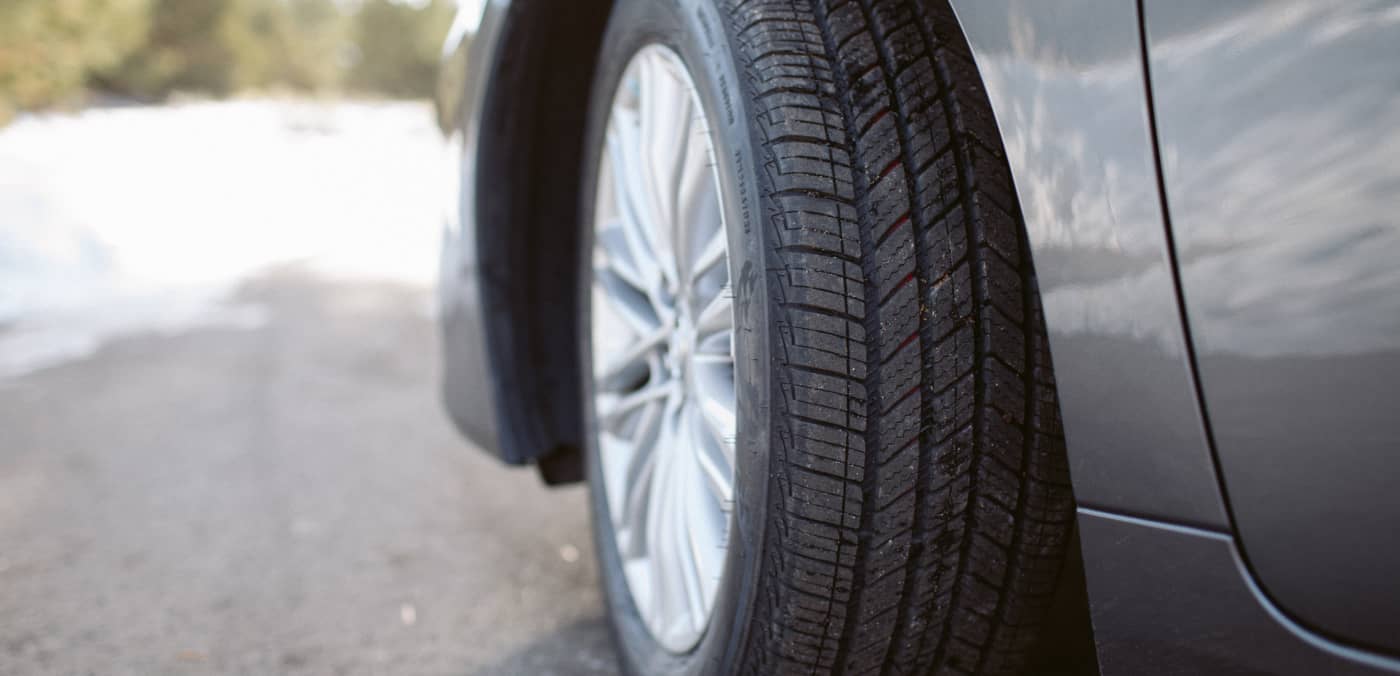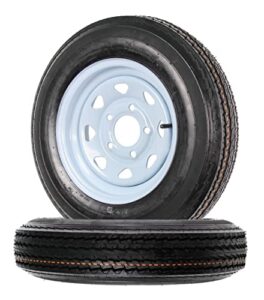The minimum tread depth for front tires is 2/32 of an inch. This ensures adequate traction and safety on the road.
Maintaining proper tire tread depth is crucial for safe driving, as it affects how effectively your vehicle can grip the road, especially in adverse conditions. Tread depth can significantly impact stopping distances, with worn tires taking much longer to stop a vehicle than those with adequate tread.
Drivers should regularly check their tire tread depth to prevent any compromise in handling and braking. A simple way to do this is by using the “penny test,” where a penny is inserted into the tread grooves; if Lincoln’s head is fully visible, it’s time to replace the tire. Driving on tires with diminished tread can lead to hazardous situations, such as hydroplaning on wet surfaces. Thus, keeping an eye on your tire’s condition is not just about adhering to legal standards, but also about ensuring your own safety and the safety of others on the road.

Assessing Tire Health
Keeping your car safe involves regular checks on tire health. Tires are what connect your vehicle to the road. Good tire tread is necessary for proper grip, especially in harsh conditions. Let’s dive into understanding this critical aspect of your car’s safety.
Why Tread Depth Matters
Tire tread depth affects how your car handles. Tires with adequate tread help avoid slides and skids. In rain or snow, deep treads channel water and slush away from the tire surface. This allows for better road contact. Tread also impacts stopping distance. More tread can mean a shorter path to a full stop. The minimum legal tread depth varies but is often 2/32 of an inch for front tires.
Measuring Tread Depth Correctly
Knowing how to measure tire tread depth keeps you safe. Use a tread depth gauge for precise measurement. You can also use the penny test. Insert a penny into the tread with Lincoln’s head upside down. If you see all of his head, your tread is below 2/32 of an inch.
Follow these steps:
- Place the gauge in the grooves of the tire.
- Press the gauge until the base is flat against the tread.
- Read the measurement on the gauge stick.
- Check several spots across the tire for even wear.
For accurate results, measure in at least three locations per tire: outside, center, and inside treads. Refer to the manual for your specific vehicle’s recommendations.

Legal Requirements
Understanding the legal requirements for tire tread depth is crucial for safety.
Tread depth affects grip on the road, especially in adverse conditions. It’s not just a safety issue;
it’s a legal one, too. Authorities set minimum standards to ensure vehicles can stop and handle correctly.
Minimum Tread Depth Standards
The universal standard for minimum tread depth is 2/32 of an inch.
New tires typically come with 10/32″ to 11/32″ of tread. Once they wear down to 2/32″,
it’s time to replace them. To measure, use a tread depth gauge or check the built-in tread wear indicators.
State-specific Regulations
While the 2/32″ standard is common, some states have their own regulations.
For example, California and New York might require deeper treads for specific vehicle types or during certain seasons.
Here is a breakdown of state-specific regulations:
| State | Minimum Tread Depth |
|---|---|
| California | 3/32″ |
| New York | 2/32″ |
Always ensure your front tires meet these standards.
Check with your local DMV for the most current information.
Safety Implications
Maintaining the right tread depth on your front tires is crucial for safety. It can mean the difference between a secure ride and a dangerous one. The legal minimum tread depth is 2/32 of an inch. But many safety experts suggest replacing tires before they get this worn. Proper tread depth affects how your car accelerates, turns, and stops, especially in bad weather.
Grip And Traction Concerns
The tread on your front tires gives you grip on the road. Tires with deeper treads stick to the road better. This helps you control your car. Thin treads can lead to slipping or losing control. This is important on wet or icy roads. Without enough tread depth, your car’s ability to perform in poor conditions drops sharply.
- Dry Roads: Tread grips the road, car stays steady
- Wet Roads: Tread channels water away, prevents sliding
- Sparse Treads: Less grip, more slide, higher risk
Hydroplaning Risk
Hydroplaning is scary. It happens when a tire can’t push water away fast enough. Your car then glides on a thin layer of water. It loses contact with the road. Deep treads push water out from under your tires. This helps you keep control. Without enough tread depth, your tires may fail to prevent hydroplaning. This increases the risk of accidents.
| Tread Depth | Risk of Hydroplaning |
|---|---|
| 4/32 of an Inch | Moderate Risk |
| 3/32 of an Inch | Increased Risk |
| 2/32 of an Inch | High Risk |
Use a tread depth gauge to check your tread. A penny test can work, too. Place a penny upside down in the tread. If you see the top of Lincoln’s head, your tread is too low. It’s time for new tires.
Maintaining Your Tires
Keeping your car’s tires in top condition is vital for safety and performance.
Front tires especially need regular attention as they
handle steering and a large part of the braking force.
Minimum tread depth plays a crucial role in grip and water
displacement.
Be proactive about tire maintenance to avoid any risks on the road.
Regular Inspection Techniques
Inspecting your tires routinely ensures their longevity and your safety.
Follow these simple steps to keep them in check:
- Check Tire Pressure regularly with a gauge to ensure optimal inflation.
- Examine tires for any visible damage or irregular wear patterns.
- Use a tread depth gauge to measure the tread depth.
- Perform the Penny Test: Insert a penny into a tread groove with Lincoln’s head facing down. If you see his entire head, it’s time to replace the tire.
When To Replace Your Tires
Tread depth is critical for safe driving. Legally,
the tread must be at least 2/32 of an inch.
To ensure maximum performance and safety, consider tire replacement
before hitting this minimum.
| Tread Depth | Condition | Action |
|---|---|---|
| 4/32″ | Marginal | Prepare for replacement. |
| 3/32″ | Dangerous in wet | Replace soon. |
| 2/32″ | Legally worn out | Replace immediately. |
Don’t wait until you reach the legal minimum.
Tires with shallow treads can lead to reduced traction, especially on wet roads.
For an easy reminder, replace your tires as soon as you notice significant wear.
This practice is not just about compliance; it’s about ensuring your safety and the safety of others on the road.
Choosing New Tires
When the tread on front tires wears down, it’s time to buy new ones. Safety and vehicle performance hinge on adequate tread depth. The legal minimum tread depth for front tires is 2/32 of an inch. Under that, tires must be replaced. Proper tire choice is critical.
Factors To Consider
- Vehicle Type: Match tires with your vehicle’s needs and specifications.
- Driving Conditions: Choose tread patterns suited to varying weather conditions.
- Performance: Consider handling, gas mileage, and load capacity.
- Brand and Price: Compare brands and get the best quality within budget.
Reading Tire Indicators
Tires have built-in tread wear indicators. They’re bars inside the grooves. When these bars level with the tread, replace your tires.
| Tread Depth (in inches) | Condition | Action |
|---|---|---|
| 2/32 | Minimum legal limit | Replace tires |
| 4/32 | Starting to wear | Monitor closely |
| 6/32 | Good condition | Safe to drive |
Use a tread depth gauge for precise measurements. These gauges are affordable and easy to use.

Frequently Asked Questions
How Long Will 5 32 Tread Last?
A tire with 5/32″ tread typically lasts for about 10,000 to 20,000 miles, but this can vary based on driving habits and conditions.
Should I Replace Tires At 5 32?
Tire replacement isn’t typically necessary at 5/32″ tread depth if driving conditions are normal. Monitor your tires regularly for wear and replace them when they reach 2/32″ to maintain safety and performance.
Is 7 32 Tire Tread Good Or Bad?
A 7/32″ tire tread depth is generally considered good, indicating substantial tread life remaining for safe driving.
What Is The Lowest Legal Tire Tread Depth?
The lowest legal tire tread depth is 2/32 of an inch. Driving with lower tread can compromise vehicle safety and handling.
Conclusion
Safety on the road hinges on maintaining proper tire tread depth. For front tires, the minimum legal limit is often 2/32 inch. To ensure optimal grip and performance, regular checks are a must. This simple routine can significantly guard against accidents and improve your driving experience.
Remember, when in doubt, replace worn tires promptly for your peace of mind.





















